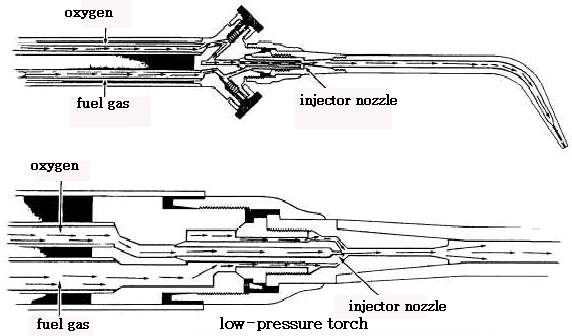|
저압식 torch(welding torches)
The oxygas welding torch mixes oxygen and fuel gas in the proper proportions and controls the amount of the
mixture burned at the welding tip. Torches have two needle valves: one for adjusting the oxygen flow and the
other for adjusting the fuel gas flow. Other basic parts include a handle (body), two tubes (one for oxygen
and another for fuel), a mixing head, and a tip. On some models the tubes are silver-brazed to the head and
the rear end forgings, which are, in turn, fitted into the handle. Welding tips are made from a special copper
alloy and are available indifferent sizes to handle a wide range of uses and plate thicknesses.
|
1. 저압식 torch(low-pressure torch)
|
|
|
|
|
|
|